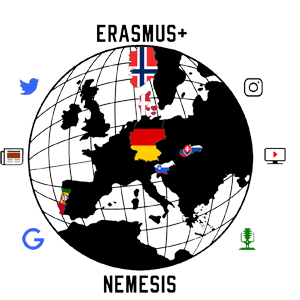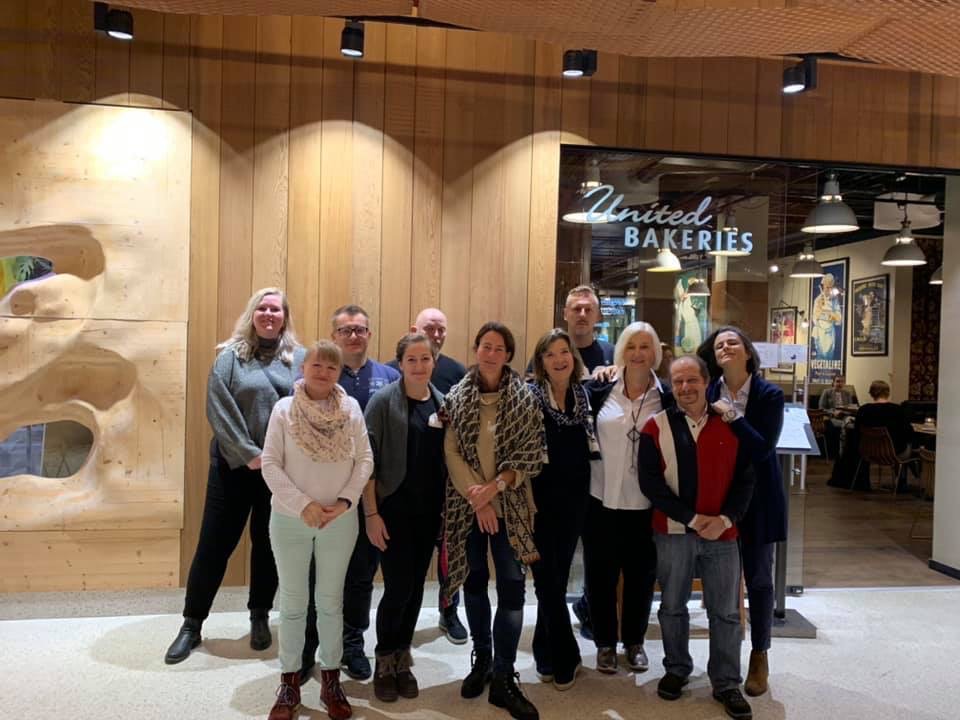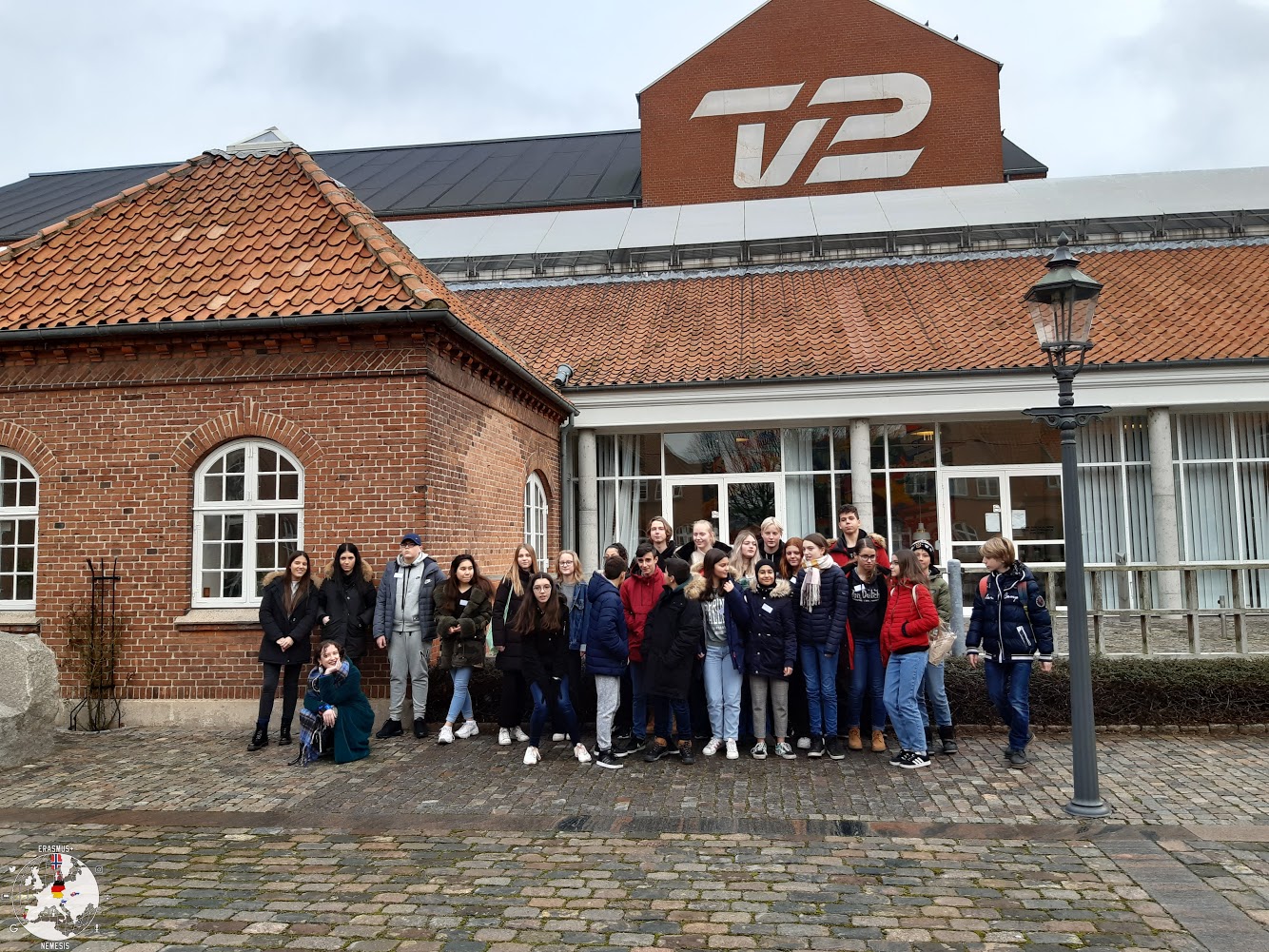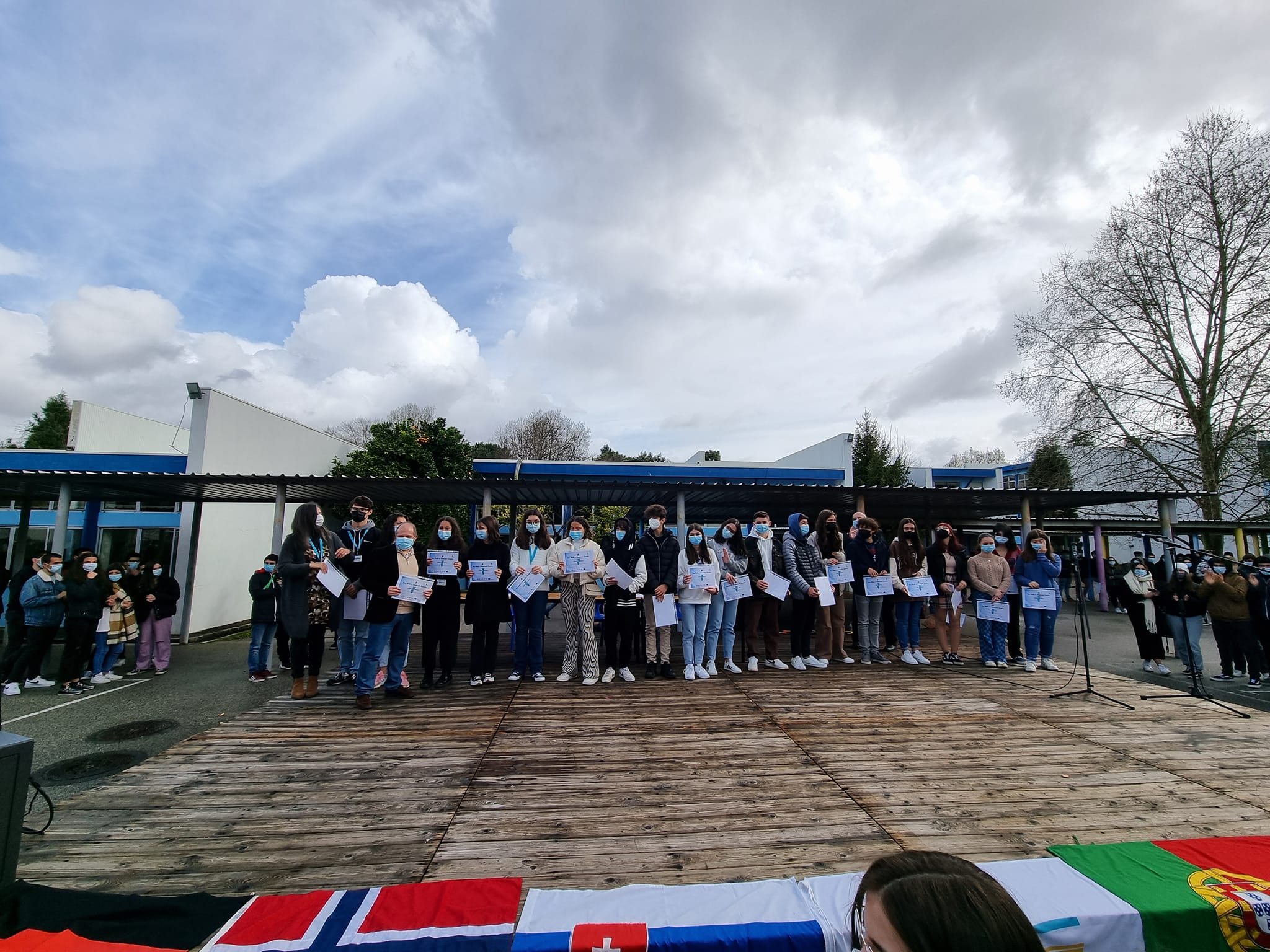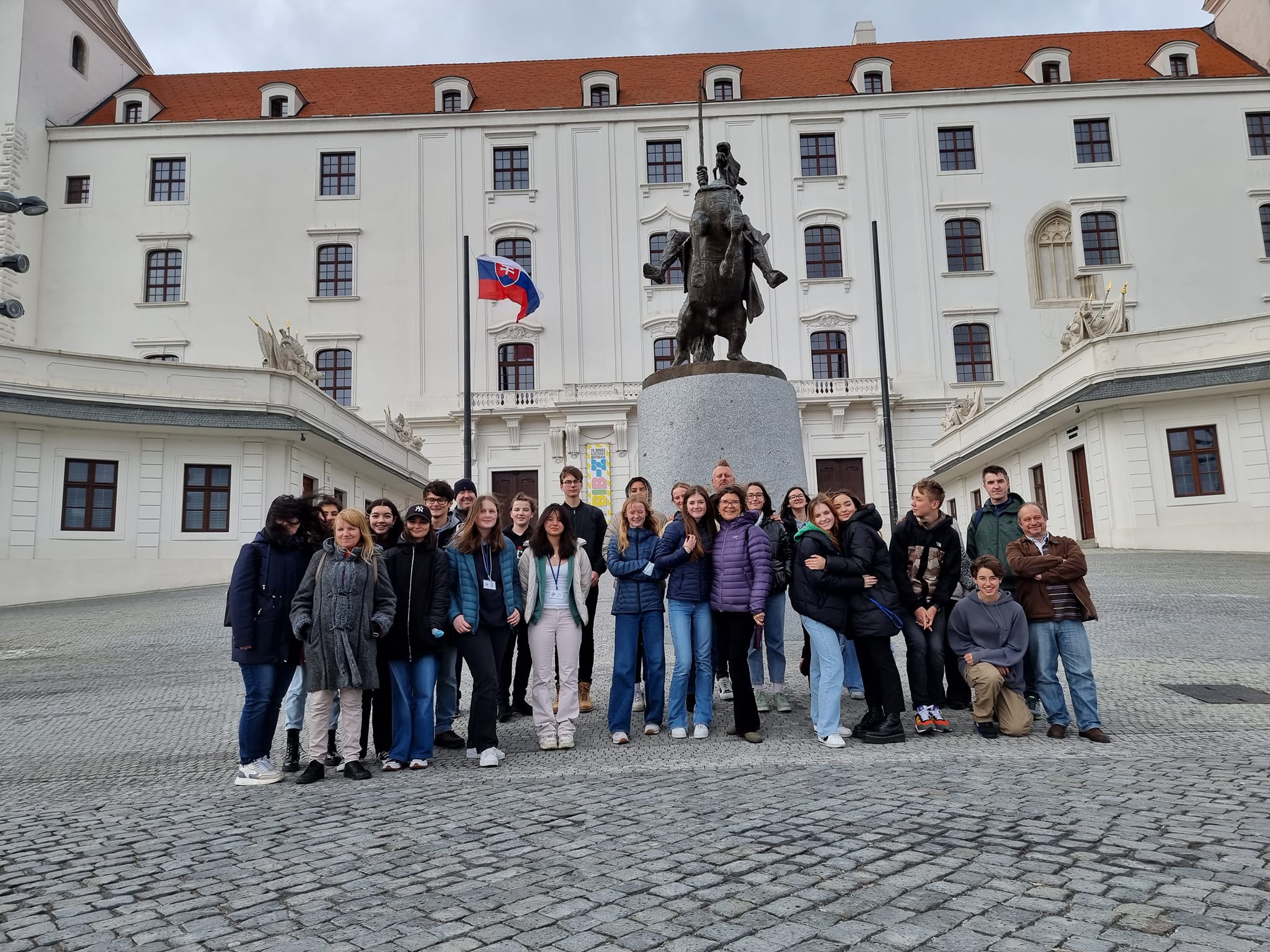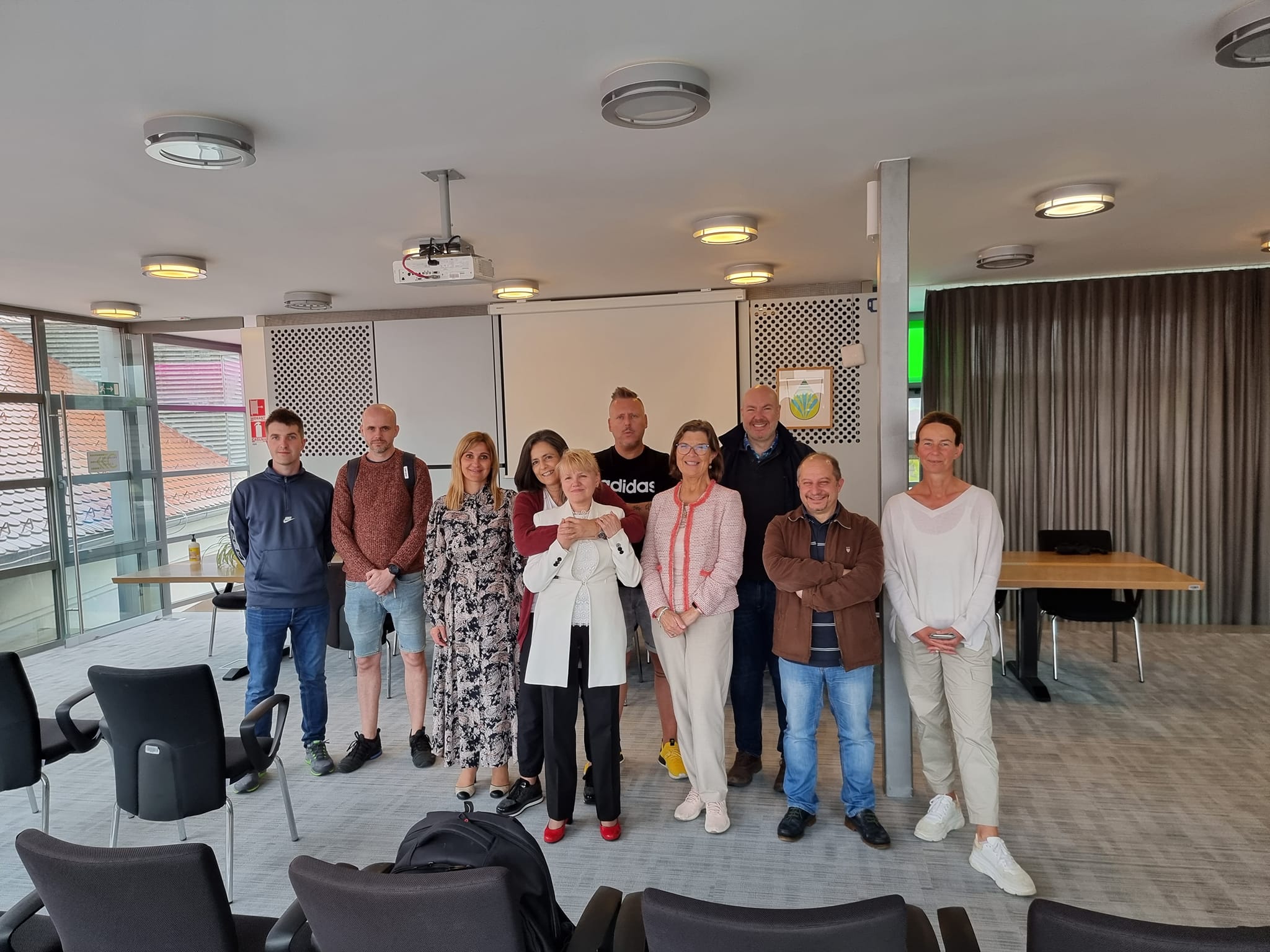First mobility in Norway
The first mobility took part in Norway at Østerås Skole from October 21st to 25th 2019. We all got very well along and made such good work together. After this week we named our team The Dream Team.
The group of teachers in the project benefitted a lot from this meeting. We worked well together, found solutions to a lot of questions and the atmosphere was friendly and solution-oriented. It was really amazing how well this functioned. Now we all look so much forward to all the international meetings with the pupils. And there were also so many clever persons; when we had discussed a task, some teachers were already working on finding the solutions to solve the task, i.g. making the online questionnaire. And we managed to plan a lot of the project and have all the tasks ready for preparation for Denmark and partly also for Bratislava. We now feel confident that all participants know what their tasks are, and which tasks to work on and prepare, and in which way.
The pupils benefitted from this gathering by having got to know the participating teachers, and by seeing their presentations they got so excited and interested. They were also really surprised by the beauty of these countries that they don’t know so much about. Now they look so much forward to visiting the countries, and to do a really good job in the project. And to them, it feels more real as they have met the teachers involved.
The home team of my school also benefitted from meeting and talking with all our guests. They got very well connected, laughed and have fun together. And they learned a lot about the other countries‘ school systems and how their schools were. And they also understood a lot more about the importance of the project and its complexity. Now they all think this was a nice group, and they are really positive about the project, both for helping to carry out the project and being part of it.
Odense, the second mobility
The first week of March 2020, Nemesis met in Denmark to work on our very first task with pupils.
The participants were two teachers and five pupils from Norway, Germany, and Portugal. From Slovakia, there were four teaches and five pupils and from Slovenia, there were only two teachers as this was at the very beginning of the coronavirus epidemic in Europe. It turned out that all schools were shut down the week after we came home. Even with some doubt, we decided to have the meeting in Odense. We had been in close contact with our NAs before we decided to carry out the meeting, as there were no known cases of the virus in our communities or even countries at that time. ( only a few in Norway).
The first task was to vote for the NEMESIS logo. Each country brought two logos and the pupils voted for the one to be used during the project, and from now on, this follows the project as you can see in this web page. The winner was form Slovenia.
The objective of this meeting was to analyse the survey that had been carried out during the winter. We had through the survey gathered lots of data on young people’s news habits. We had also made a survey for the grown-ups news habits. The pupils worked in five international groups, one pupil from each country. They were to analyse the survey, what could they read out of it, and they had to present it by writing a newspaper article and making a post about it on social media. They also had to present their results to the others at the last gathering with all the seventh graders. And of course, they had to work together in English, and both write and present in English.
We visited Danish TV2 where we learned how they work on news, and how they work to differentiate the news and programs to different age groups. It seems that they also struggle to reach out to the teenagers, to make them interested in edited news, not just what they randomly find in their feeds on social media. TV2 works on different platforms to try to make something that can catch the interest of that age group. This same issue we also discovered when the Norwegian class visited the news editorials in NRK.
The Danish pupils took us on guided tours in Odense. They had prepared the guiding for the international groups including the teachers. We visited the town hall and had a guided tour there as well. One day all pupils made a typical Danish lunch, they cooked together, and we all ate together. Very nice!
We all experienced how Risinge school was and noticed the differences to our own schools
And at last, the teachers visited the local club where the Danish national scald Kim Larsen had lived, he was also an icon in Norway.
The activity was not really integrated into the school’s normal activities, except the morning assembly and the ice-breakers in the mornings in the assembly hall. Moreover, we all noticed that the school was well prepared for the visit, and all pupils were helpful and very polite when we met them in the corridors and classrooms where some of the teachers had the pleasure of participating in normal classes.
The participants had a great time. They were all well received by the school and their host families. This was quite scary for some at the beginning, but they all managed well after a couple of days. To many, this was the first time away from home without their family or close friends. The pupils learned to work with pupils from other nations, pupils that they had never met before. They had to discuss, solve tasks, write and present in English, a foreign language for all of them. This was quite a challenge at the beginning, but they managed well. To many, this was an eye-opener with regard to how important it is to learn a foreign language well. They had to discuss figures, make a newspaper article, which they spent much time on, and managed quite well. However, they discovered that it was more difficult to get their message out through social media, as they were not used to publish that short texts on a complex topic.
Some pupils with less confidence suddenly discovered that they took leadership in a group, and I even heard one girl saying, I didn’t know it was so tiring having responsibility in a group and being the clever one! Some discovered that they were appreciated just for being nice, charming and kind. While others discovered that their outstanding politeness was highly appreciated. The self-esteem of many of the participants rose considerably during this week.
The pupils learned about TV2 and how they worked with news to customize it for different age groups. We all learned about HC Andersen, Danish history and Odense as a very charming town. Moreover, we learned to make Danish food together with other pupils and teachers and enjoying it together with our new international friends. The teachers learned about the Risinge school system, about Danish hospitality, and the way they organize their activities. We learned new icebreakers and saw the value of morning assembly. The teachers ate typical Danish food at a krog, and we went to Kim Larsen’s own music bar.
We all had a splendid week, rich in experience, with lots of fun, and we cannot wait to meet again.
Gauting, the third mobility
In this mobility participated two teachers from Portugal, two from Germany and three from Slovakia. Five students from each of these countries also took part. Schools from Denmark, Norway and Slovenia were unable to participate as a result of the mobility restrictions imposed in Europe due to the context of the pandemic containment measures. Even so, the respective Coordinators were present by videoconference at some relevant moments, such as the final presentation of the work.
The aim of this work meeting in Gauting was to work around the comparison between real news and fake news. Identifying different types of fake news based on the analysis of some indicators for this purpose, and also using some tools available, and understanding the risks associated with the propagation of this type of news, were the tasks to which the working groups were dedicated during the week.
The work began with the presentation of the news (some fake and some real) previously collected by the students from each country, so that everyone tried to identify which ones were real and which were fake. In this way, everyone came to understand that it is not always easy to distinguish them and that, on the contrary, it is often easy to be deceived by the apparently credible way in which they are presented.
During the week, the project coordinator at Paul hey school organized several workshops for students and teachers on the topic addressed, as well as on the use of the digital tool “Book Creator” to be used to prepare the final product. In the end, each working group, composed of elements from the countries present, produced an e-book containing all the information collected. These e-books can be an important tool, made available to everyone, to identify fake news and ways to combat them. For this purpose, they were shared and disseminated on the project’s web page. The students present at this work meeting will also have the task of disseminating the conclusions and products of the work carried out, in their schools of origin.
During the week, all students and teachers also had the opportunity to carry out a series of other activities that allowed them to get to know Gauting and Munich (German students prepared guided tours for this purpose), the way of life of their German colleagues (including in their family context, since the students stayed with host families), enjoy the local gastronomy, and practice sports and/or leisure activities such as Völkerball or ice skating.
Everyone had the opportunity to attend some classes, to get in touch with other Paul Hey students from different age groups and thus, to realize the differences and similarities between this school and their own schools.
The warm way in which everyone was welcomed at the school by students, teachers and management was the dominant note. The presence of the students and teachers involved in the project was very well accepted by all, who were willing to share common spaces at the school and also share their personal and professional experiences, thus facilitating the work during the week. The host families were also extremely friendly, welcoming the Slovak and Portuguese students in a warm way, facilitating their adaptation to a situation that for many was completely new, as they had never been outside their own families, or even outside their country of origin.
The pupils learned to work with pupils from other nations. They had to discuss, solve tasks, write and present in English, a foreign language for all of them. This was a challenge that they successfully overcame throughout the week. It also allowed them to realize the importance of knowing, mastering and being able to communicate in a foreign language.
Everyone left enriched with this experience, which proved to be extraordinary in strengthening their confidence and self-esteem, fostering a spirit of cooperation, tolerance and acceptance of differences and similarities among all, and so, helping to build a true sense of European citizenship.
Mortágua, the fourth mobility
As a teacher at Pavol Marcely Elementary School in Bratislava, I took part in a trip abroad as part of the Erasmus + Nemesis project in Mortágua, Portugal, at Agrupamento de Escolas de Mortágua. This project consists of a multicultural partnership between six European schools from different countries: Portugal, Norway, Denmark, Germany, Slovenia and Slovakia. After the mobility in Munich, Germany, the Portuguese school accepted the ambassadors of the partner countries‘ schools in the project.
The school consists of three educational institutions: Escola Básica de Mortágua, which teaches pre-school education and the first cycle of basic education, has several recreational and pedagogical spaces for students: a school library, a canteen, two gyms, a music room and a playground. There is also a kindergarden for children aged 0 to 3, run by
Santa Casa da Misericórdia de Mortágua. The Elementary School of José Lopes de Oliveira has several functional and leisure facilities: a school library, a student bar, a structured
teaching unit and specialist support, an auditorium, outdoor playgrounds, a climbing wall, playgrounds and green spaces, science laboratories and a physics and chemistry classroom, a music classroom, a math classroom, etc. The João Lopes de Morais High School has several functional and leisure facilities: a school library, a student bar, a cafeteria, a multi-purpose hall, a sports hall, outdoor playgrounds, playgrounds and green areas, chemical and physical laboratories, mathematics and information rooms, as well as special rooms used for professional courses. It also has rooms assigned to different departments equipped with specific materials from related areas.
In the week from 07.03.2022 to 11.03.2022, Portugal became a temporary home for us teachers and our students from Bratislava. The whole week was marked by the strong involvement of the educational community. The school, families and the local community welcomed us with open arms. The opening and closing ceremonies, as well as lunch with the host families, presented the school in a very friendly and positive way. During the mobility,
we talked about a very current topic together with our students, namely the Russian-Ukrainian conflict. Five international working groups focused on five different topics and prepared a
report, which will be published on the project’s official website. We thought about the media and this conflict, especially the role of social networks in developing (or destroying) democratic societies. The students discussed this topic very seriously and worked as a team, training and filming their final reports.
Despite the hard and fruitful work, it was time to get to know all the buildings belonging to the school, walk around the village of Mortágua, visit the Mata do Bussaco
nature reserve and the city of Coimbra, and experience canoeing and paddling in the Canoe Sports Training Center.
Goodbyes were difficult, but the experiences of this mobility will accompany the lives of everyone involved.
Bratislava, the fifth mobility
After two years, we finally managed to meet in Bratislava. Firstly, covid stopped us, and secondly, the war was close to stopping us, but most of us decided to go. Luckily we had changed the order of the Portugese and the Slovakian mobility. If not, nobody would have dared to go. Germany did not go, as some of the parents found it too risky, and from Slovenia, only two teachers were present. Thus, we had four pupils from Portugal, six from Norway and many from the host school. This worked well even though we missed the rest of the group. The goal of this activity was to work on how to make your own voice heard in democratic societies. The pupils worked in four international groups, where they had to decide on which topic they would like to post their ideas and thoughts. As they worked in mixed groups, they had to choose topics that were relevant for all of them. They worked on their topics and posted them by the end of the week. They also posted supporting messages for the young people in Ukraina.
During the week a police officer came to the school to talk about the dangers of using the internet, she talked about how we all can be fooled, and encouraged us to cautious about what we find, what we believe and what we post. She also went through the rules for what is allowed to do and what is not. In addition to this, we all learnt what is legal and not, and the fines and punishment for breaking the law. Basically,we learned about good internet behaviour.
One of Slovakia’s most famous influencers visited us and talked about how social media influences us, and how addicted we get to it. He focused a lot the impact it has on our brains, and how we all should be very careful, especially young children. This was a great experience and a real eye-opener for many of our participants.
We learned about European history by being on sightseeing in Bratislava, having a very professional guide. Being on historic spots, seeing for ourselves made a huge impact. We visited the Slavin memorial, where 7000 Russian and Ukrainian solders were buried in mass graves after WW2. This was quite special in times of a new war in a neighbouring country.
As we work on media, we visited the Ruzinov TV station. This was really a good experience, as this was small and very welcoming. We were all allowed to try the equipment and see how it all worked. The pupils found this very good, as it was not just listening, but also trying it out themselves. Then we visited the TA3, state TV, where we got to know more of TV production on a bigger scale.
Finally, we travelled out of Bratislava to visit the Danubiana art gallery. This was amazing, seeing how art, location and the building itself melts into a higher degree of artwork. The pupils were impressed and took many pictures of things they found interested. Travelling into the countryside gave us an impression of the landscape surrounding the city.
Dolenjske Toplice, the final mobility
In the period 30.5. – 3.6. In 2022, as an employee of Pavol Marcely Elementary School, I took part in the final project mobility in Slovenia together with two colleagues. It took place within the NEMESIS / Erasmus + project.
Around 12:00 on Monday, May 30, my colleagues and I arrived in the village of Dolenjske Toplice. After checking in the hotel and after some introductory welcoming rituals in the school, a program was prepared for us with the participation of teachers and students of the local primary school, in the presence of the mayor of the village, who also welcomed us in his office and showed us the surroundings
On Tuesday, we had a tour of the school, an excursion to the Berryshka distillery and chocolate factory, again working on projects with the participation of National Agency employee, and later a picnic on a local farm.
On Wednesday we took a trip to Ljubljana, along the way we stopped at Lake Bled for a short excursion.
On Thursday, excursions were prepared for us in local radio and local TV station. After the final working meeting, we had a final dinner in the evening, conwhere we were presented with some gifts and project certificates of attendance.
On Friday, we said goodbye to all the participants for the last time and left Slovenia.
I consider the final mobility, as well as the whole project, to be a very positive experience for the students as well as for the accompanying teachers.
